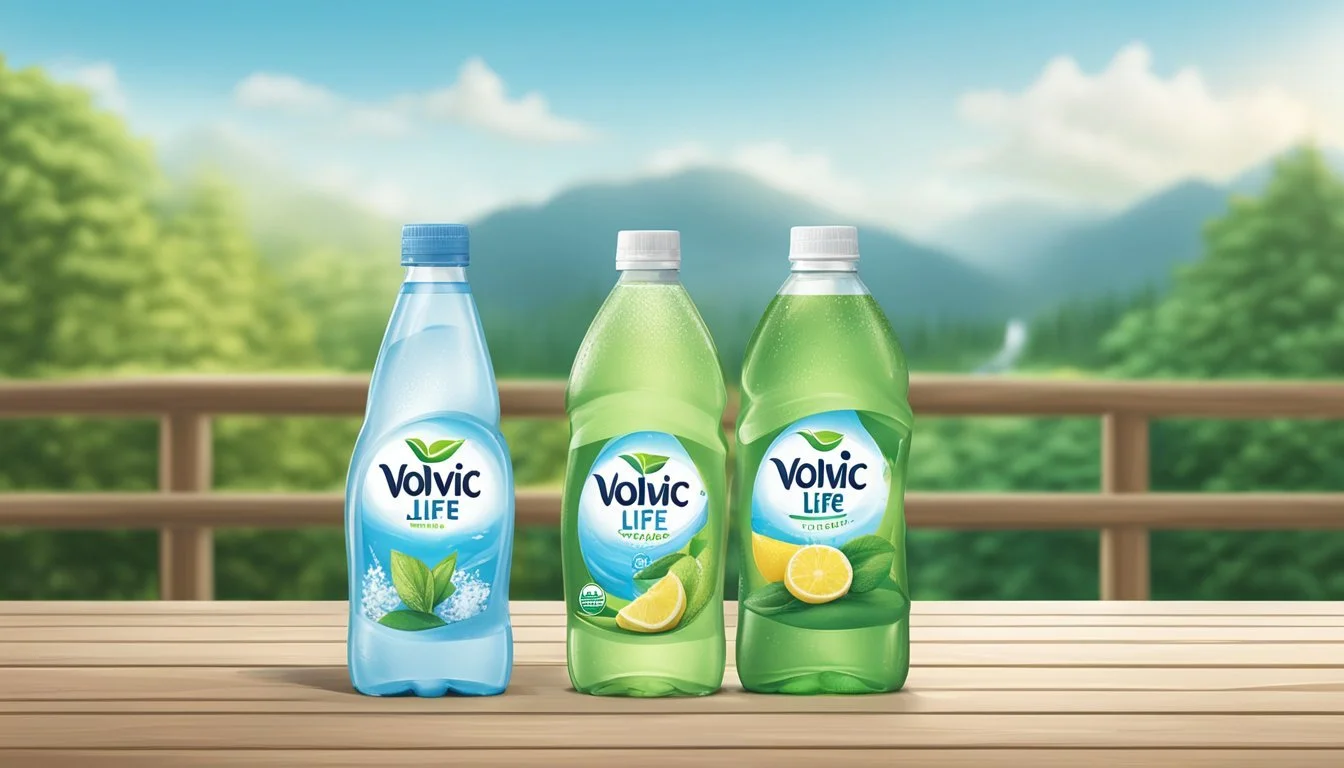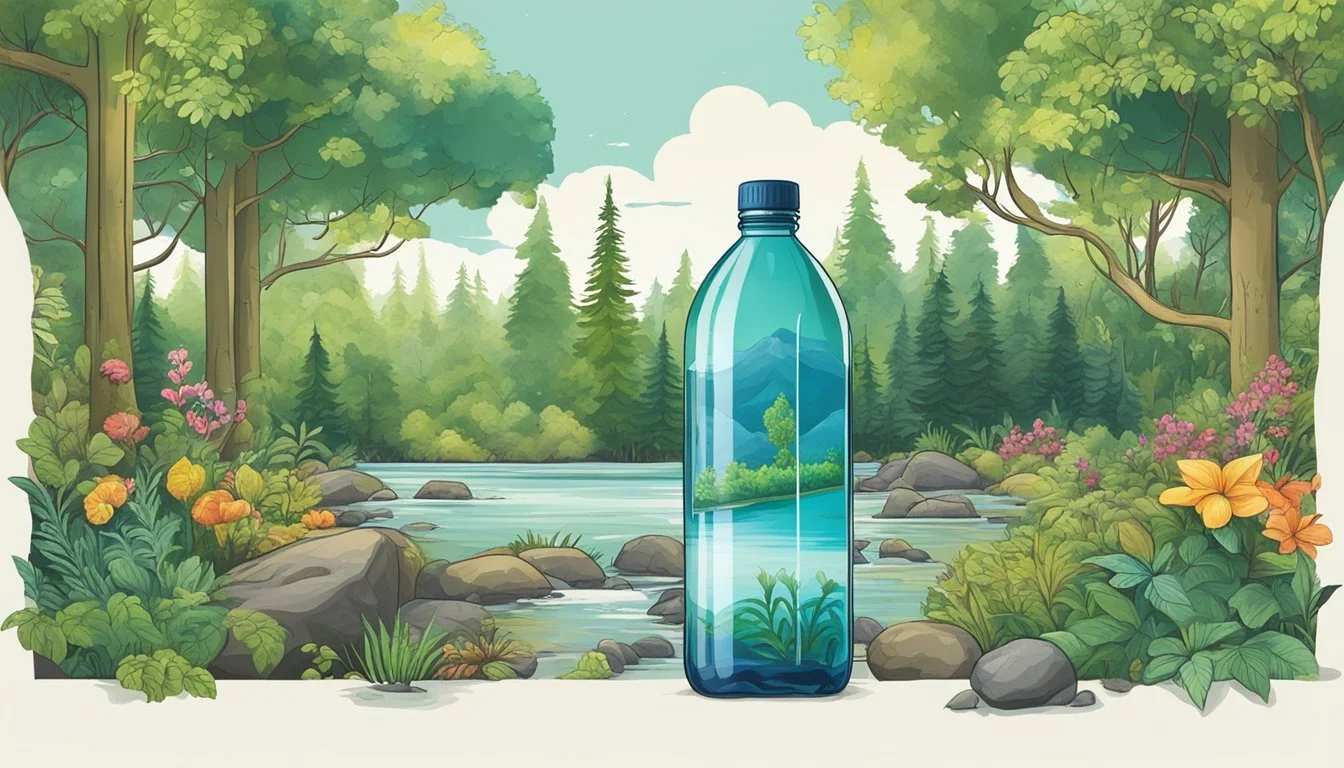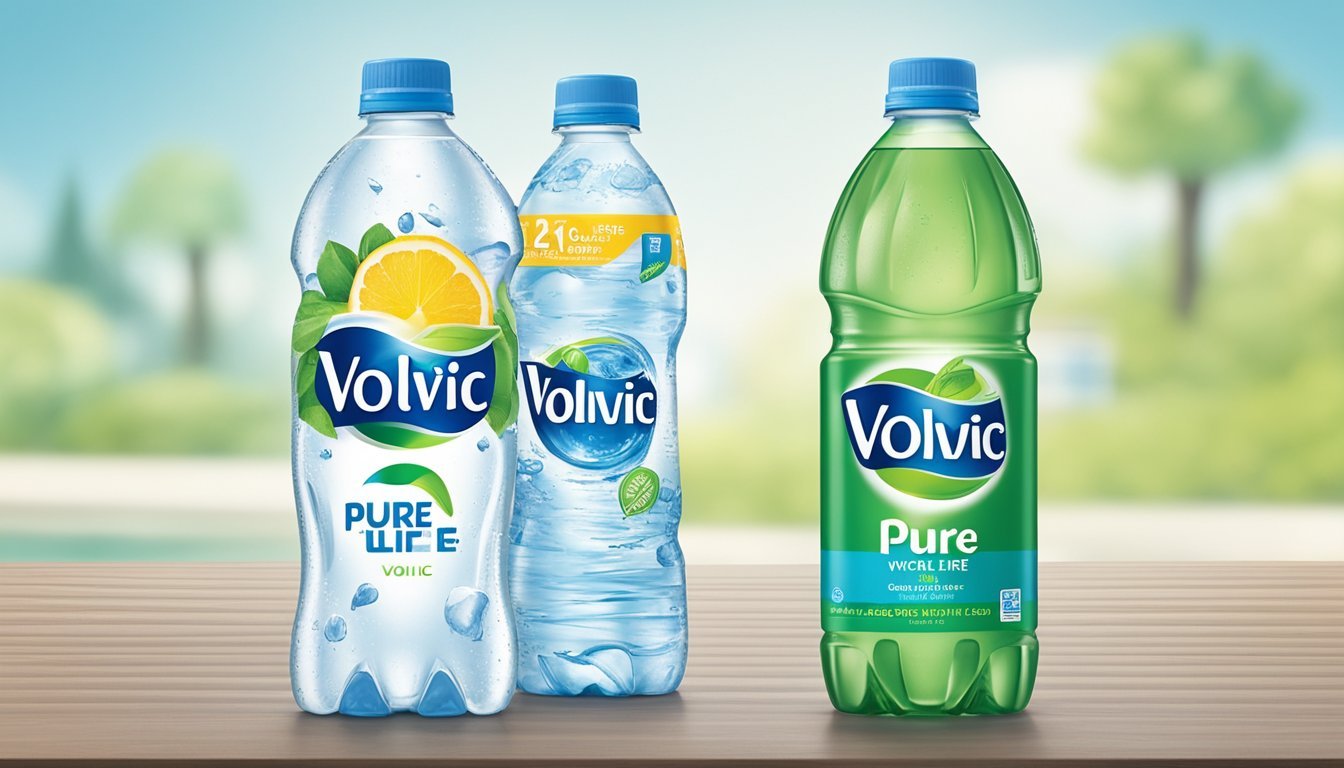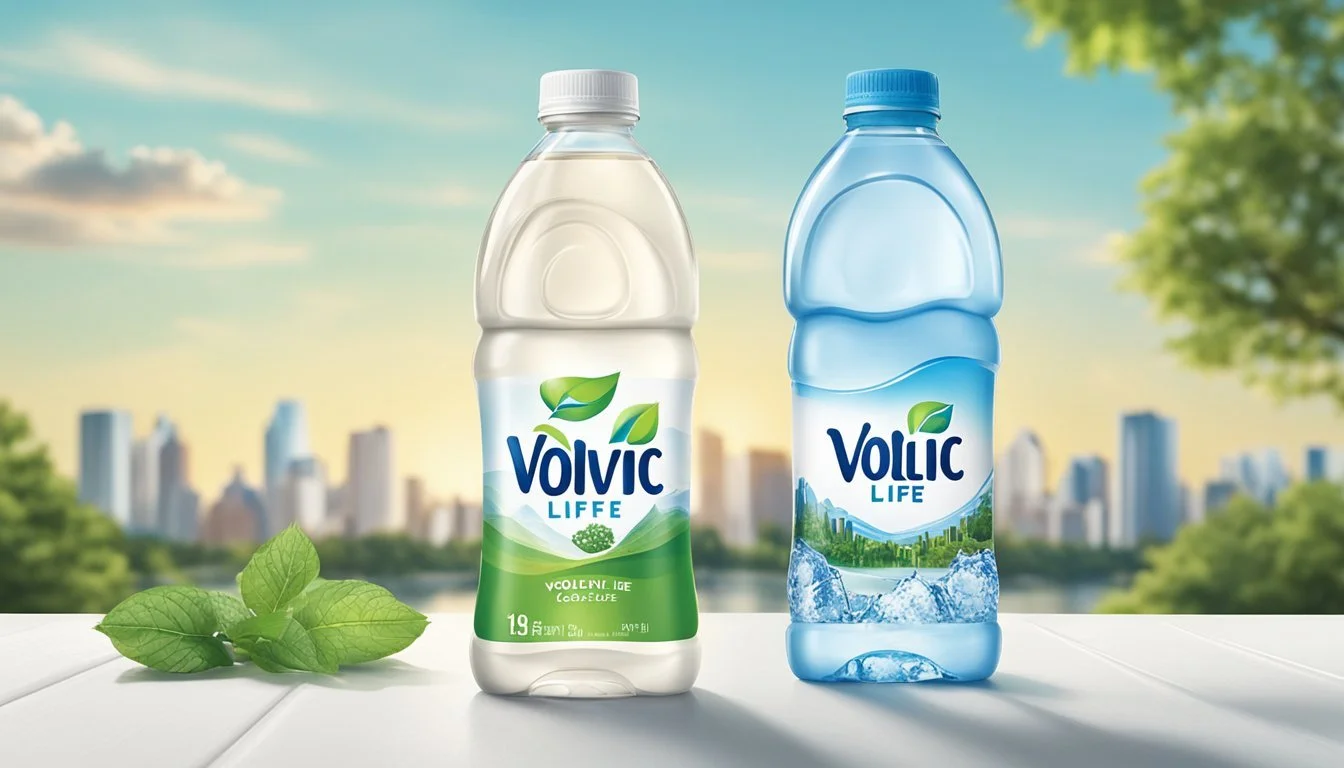Nestlé Pure Life vs. Volvic
Comparing Quality and Taste of Bottled Water
Choosing the right bottled water can depend on various factors, including taste, source, and the processes used to ensure its purity. Nestlé Pure Life and Volvic are two popular brands that consumers rely on for their daily hydration. Nestlé Pure Life, a globally recognized brand, promises clean and safe drinking water and is considered an accessible option for many. Processed and purified, it goes through a rigorous filtration process.
In contrast, Volvic water is sourced from the Auvergne volcanic region in France, known for its rich mineral content and natural filtering process. The unique volcanic filtration gives Volvic its distinctive taste and mineral composition, differentiating it from distilled or purified waters like Nestlé Pure Life. With hydration at the forefront of health discussions, consumers are becoming more conscious of not only meeting their daily water intake but also the quality and source of the water they drink.
Comparing Nestlé Pure Life and Volvic involves looking at the specifics of source, taste, and mineral content as well as the environmental impact of bottling and distributing these waters. While Nestlé Pure Life focuses on purity and wide availability, Volvic offers a natural mineral profile and an eco-conscious brand image. Both brands have their own set of loyalists, but the decision between the two often boils down to personal preference and values regarding water consumption.
Historical Background of Bottled Water
Bottled water has a significant historical lineage that dates back centuries. Initially, people consumed water directly from natural sources such as springs, rivers, and wells. As civilization advanced, tap water became more commonplace, especially in urban settings. However, the appeal of bottled natural water persisted, primarily for its perceived purity and beneficial minerals.
Bottled Water Emergence:
1844: The American bottled water industry began when the therapeutic properties of water from a local spring in Maine were recognized.
Early to Mid-1900s: Natural water from springs continued to be bottled and sold, with brands like Poland Spring gaining popularity.
The development and sale of bottled water have been closely tied to the public's perception of tap water quality and the marketing of bottled water as a cleaner or healthier alternative. In contrast, tap water is treated and regulated to meet safety standards, but it may still contain certain levels of minerals and additives used during the purification process.
Nestlé Pure Life entered the global market in 1998, positioning itself as a safe and accessible source of hydration, available in over 20 countries. The brand emphasizes a filtration process that removes impurities while retaining essential minerals. This process intends to offer a consistent taste and quality, distinguishing it from both tap water and other brands of natural bottled water, such as Volvic, which originates from a volcanic region in France and is mineral-rich by nature.
Comparing Nestlé Pure Life and Volvic
This section examines the source and origin, production processes, and taste profile of two popular bottled water brands: Nestlé Pure Life and Volvic.
Source and Origin
Nestlé Pure Life is primarily sourced from well-protected underground sources and is subjected to a multi-step purification process. In contrast, Volvic water originates from the Chaîne des Puys in France, where it is naturally filtered through volcanic rock which enriches the water with minerals.
Production Processes
Nestlé Pure Life undergoes a rigorous purification process known as Hydro-7, which includes steps such as carbon filtration, reverse osmosis, and ultraviolet disinfection. This process is designed to remove impurities, ensuring consistent quality. Volvic also has a unique filtration process due to its volcanic origin, which naturally purifies the water while also infusing it with a blend of minerals.
Taste Profile
The taste of water is subjective; however, Nestlé Pure Life is often described as having a neutral, clean taste, due to its purification process that removes most minerals and impurities. Volvic tends to have a distinctive, fresh taste attributed to the volcanic minerals naturally present in the water. The consumption of these two brands may come down to personal preference for a mineral-infused taste versus a clean, purified taste.
Health and Safety Considerations
When considering bottled water like Nestlé Pure Life and Volvic, two critical health and safety aspects are mineral content, which contributes to health benefits, and the potential for contamination, which encompasses purity.
Mineral Content and Health Benefits
Nestlé Pure Life is known for its consistent mineral content, which includes calcium, magnesium, and sodium. These minerals are essential for maintaining hydration, muscle function, and overall health. Volvic water, sourced from the Auvergne volcanic region in France, naturally contains a unique blend of minerals such as bicarbonates, calcium, and magnesium, courtesy of its filtration through volcanic rocks, contributing to its reputation for supporting a balanced electrolyte intake and aiding hydration.
Contamination and Purity
Both brands adhere to strict safety standards to minimize contaminants like lead, heavy metals, BPA (Bisphenol A), and PFAS chemicals. Nestlé Pure Life employs a multi-step filtration process, including reverse osmosis, to reduce impurities and heavy metals. It also confirms that its bottles are made of PET plastic, which is BPA-free. Volvic asserts that their water is regularly tested and meets stringent safety criteria. Additionally, the brand emphasizes its naturally occurring filtration process, which limits the exposure to man-made contaminants. Nevertheless, consumers should be aware that variations in testing results can occur, and no bottled water can be assumed to be completely free of contaminants.
Environmental Impact
When comparing the environmental impact of Nestlé Pure Life and Volvic bottled water, it's essential to examine their packaging sustainability initiatives and the carbon footprint associated with their products.
Packaging and Sustainability
Nestlé Pure Life:
Packaging: Utilizes PET bottles, with a commitment to increase the use of recycled materials.
Sustainability Efforts: Has initiatives aimed at reducing waste and increasing bottle recyclability.
Volvic:
Packaging: Employs bottles made from PET, with some ranges incorporating recycled plastic.
Sustainability Efforts: Partners with organizations to protect natural resources and commits to more sustainable business practices.
Both companies face environmental scrutiny, as plastic bottles contribute to global pollution. The move towards more eco-friendly practices, such as higher recycled content in bottles, demonstrates a recognition of this challenge.
Carbon Footprint
Nestlé Pure Life:
Production and distribution of bottled water involves significant energy use, contributing to carbon emissions.
Nestlé has begun to address these concerns through various carbon reduction goals set across its operations.
Volvic:
The carbon footprint of Volvic's operations includes the emissions from sourcing, bottling, and transporting their product worldwide.
Volvic has made commitments to achieving carbon neutrality, investing in renewable energy, and participating in carbon offset programs.
Both companies are actively working to reduce their carbon footprints, which is a step forward for bottled water brands that have historically had a considerable environmental impact. They are also introducing measures to offset emissions, increasingly aware of their role in protecting the environment.
Consumer Preference and Perception
When it comes to bottled water, consumer choices are often influenced by brand reputation and cost-effectiveness. Nestlé Pure Life and Volvic are two brands that stand out, but for different reasons.
Brand Loyalty
Nestlé Pure Life has a considerable market share thanks to Nestlé’s extensive distribution network, which has fostered significant brand loyalty among consumers. However, the brand's perception as average in quality has impacted its prestige among more discerning customers. On the other hand, Volvic is often associated with a unique volcanic filtration process, giving it a niche appeal that garners a dedicated, although smaller, consumer base.
Affordability
Pricewise, Nestlé Pure Life is typically seen as more affordable and is readily available, which is a crucial factor for many consumers. In contrast, Volvic, sourced from France, can be perceived as a premium product in certain markets, which may lead to higher pricing and consequently affect its accessibility to the budget-conscious customer. Affordable products tend to have a broader appeal, allowing Nestlé Pure Life to maintain a larger customer base that prioritizes cost over other factors.
Regulatory Standards and Certifications
Nestlé Pure Life and Volvic are two prominent brands in the bottled water market. They must adhere to strict regulatory standards to ensure safety and quality for consumers. Both brands are regulated by the U.S. Food and Drug Administration (FDA), which mandates that bottled water regulations must be at least as stringent as those of the Environmental Protection Agency (EPA) for tap water, with some FDA standards being even more rigorous.
International Bottled Water Association (IBWA) is one entity that provides additional guidance and certification for bottled water producers. Membership requires adherence to standards that often exceed governmental requirements.
Water Quality Reports, often found as PDF documents, are important for transparency. They reveal presence and levels of substances in the water, such as PFAS chemicals, which have been under scrutiny for their health impacts. The FDA has set a standard limit for arsenic in bottled water at 10 parts per billion (ppb), and consumer watchdogs advocate for even lower levels, suggesting 3 ppb to ensure safety.
Regarding Nestlé Pure Life:
It is subject to Nestlé’s internal quality assurance program.
It complies with both federal and IBWA standards.
Regarding Volvic:
Volvic undergoes rigorous testing to ensure compliance with international standards.
It also aligns with French and European Union bottled water regulations, which are known for their strictness.
In summary, consumers can be assured that both brands meet stringent safety and quality standards set by various regulatory bodies. This includes compliance with set limits for contaminants like PFAS chemicals and arsenic, as documented in their respective water quality reports.
Market Trends and Brand Comparisons
The bottled water market has witnessed consistent growth, with brands like Nestlé Pure Life and Volvic being key players. Nestlé Pure Life, owned by Nestlé Waters, is widely recognized, utilizing affordability and global distribution as its strengths. Volvic, sourced from France, positions itself with a natural volcanic filtration narrative. Both brands compete in a diverse market alongside Dasani, Poland Spring, and Aquafina.
In terms of purity and taste, consumer preferences vary. Fiji Water and Evian are often preferred for their mineral content and taste profile. Meanwhile, Voss—marketed as Norwegian artesian water—has carved out a premium segment, similar to Icelandic Glacial and Mountain Valley Spring Water.
Popular Brands Distinct Quality Essentia High pH Smartwater Electrolyte-enhanced Life WTR Artist-designed labels Ethos Water Social impact commitment
Brand comparisons also factor in functional enhancements, as seen in Essentia’s alkaline water or Smartwater’s vapor-distilled product. Life WTR and Ethos Water integrate social and ethical elements into their brand identities, distinguishing themselves within the market.
Trending toward environmental consciousness, brands like Acqua Panna and Deer Park are adopting eco-friendlier packaging. In contrast, Arrowhead and Zephyrhills are critiqued for less inspiring offerings, despite their natural source claims.
Customers often rank bottled waters from worst to best based on personal preferences for taste, brand ethics, price points, and environmental impact. In this competitive landscape, Nestlé Pure Life and Volvic remain dominant, but must continuously innovate to meet evolving consumer demands and sustainability standards.
Closing Remarks - Making an Informed Choice
When consumers stand in the aisle choosing between Nestlé Pure Life and Volvic, several key factors come into play, namely hydration, health, environment, taste, and cost-effectiveness. Both brands offer the fundamental benefit of hydration. Nestlé Pure Life, a widely available and affordable option, provides consistent quality. However, it has been described as average in taste by some reviewers.
Volvic, sourced from volcanoes in France, is often celebrated for its unique mineral composition and taste. This may appeal to those who prioritize a distinctive flavor profile in their water choice. While both brands maintain safety and health standards, consumers concerned with the environmental impact might lean towards Vollic for its commitment to eco-friendly packaging.
Nestlé has faced criticism over its water sourcing practices, and environmentally conscious consumers may consider this when making a choice. It is crucial to weigh these aspects:
Hydration: Both brands meet the need for hydration effectively.
Health: Safety standards are upheld by both, yet Volvic's mineral content may offer added benefits.
Environment: Volvic's environmental initiatives might sway eco-conscious buyers.
Taste: Subjective preference plays a role, with Volvic usually being favored for its natural sourcing.
Affordability: Nestlé Pure Life is generally more cost-effective, making it accessible to a broader market.
Both Nestlé Pure Life and Volvic provide hydration solutions, but individual preferences for health, taste, environmental impact, and affordability will guide the final decision. Consumers are advised to consider these points carefully to choose the water that best aligns with their values and needs.









